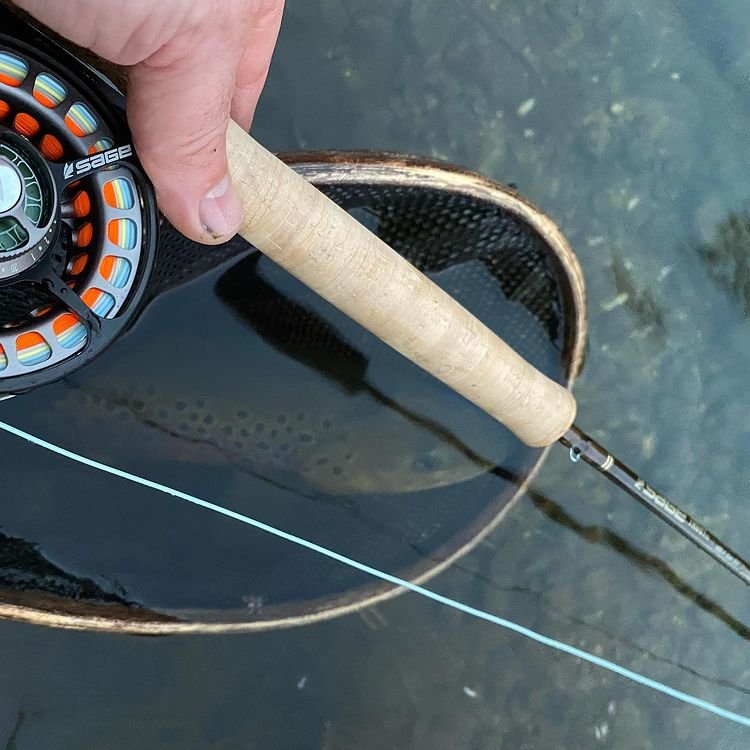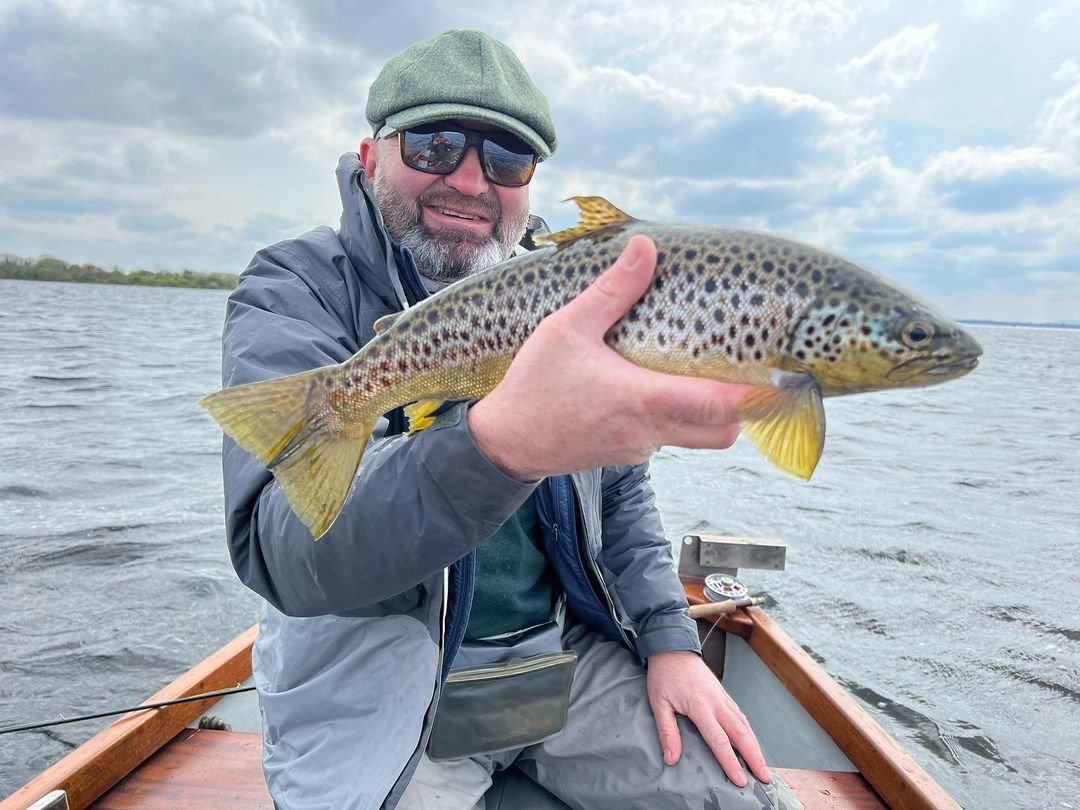
Howard Taylor
1. Choice of equipment Rods, reels, fly lines, fly floatants, clothes, glasses and other useful items.
I love the new Sage LL 9’ 4 weight and 9’ 5 weight. They are perfect dry fly rods with a cracking action. With this set up I use a Rio Technical trout line. I use this outfit when guiding and as a loan outfit to clients. I also like the Sage Foundation outfit as a starter outfit to teach both beginners and improvers. When I fish at home, I like to use an antique splitcane rod which I was given by an elderly gentlemen who found them in his attic. I have enjoyed using this and catching a trout or two using flies from my late father's box.
2. Leader material, build up, length and knots
For dry fly fishing, I tend to use a 9’ tapered leader, Rio Powerflex or similar to point 6.4lbs BS (0.178mm) - and tippet with what I require for the size of fly i’m using fro 0.15 to 0.1mm. I also adjust the length accordingly as well. I also make my own leader mud from fuller’s earth and washing up liquid to dink the tippet on glassy water. I have also found using a dark monofilament such as Maxima for your tippet can help you trick the most line shy fish to take a fly. Especially later in the season.
3. Approach and stealth.
Drab clothes - how many fly fishers do I see with a light coloured hat on! This just spooks fish. Wear greens and browns much to my wife and her girlfriends amusement! They all take the P*** out of me calling me Mr Green! I also like a drab coloured fly line. I am convinced that light coloured lines spook fish. I like a 9’ rod or longer. Here we fish mostly from the bank as wading in the chalk streams can create coloured water downstream of you and spoil other angler's fishing. Wading on many beats is not allowed. With the reach of a 9’ rod I can lift the line from the water as I start a back cast without dragging the fly into the fringe of vegetation on the riverbank. This ‘reach’ allows me to keep back off of the water whereas with a shorter rod I couldn't do this.
4. Reading the water.
When I arrive on a new stretch of water I like to walk the length before I begin fishing. This allows me to spot likely lies and spot fish in the clear water. I can then walk to the downstream end of the beat and fish upstream.
5. Casting ability which casts are essential. Casting to avoid drag! Drag is the killer fishing on rivers. Fish become experts in spotting micro drag. So a variety of slack line casts in your armoury is essential. Lean how to move your rod top to alleviate drag…another advantage to a longer rod. The reach cast is also very handy when casting to fish upstream under the near bank. Often overlooked….fish are often under your toes just upstream of you. Reach mend cast to put your fly under the near bank without laying your line in the rough.
6. Entomology, what should we know.
See what’s out there. Site an observe - be patient. Look and look again. You’ll see what is on the menu if you watch carefully. Then do your best to match the hatch. I fine I have a couple of dozen patterns that are my ‘go to’ imitations.
7. Rise forms Can they tell us something?
Yes - you can often get an idea of which stage of the hatching fly the fish are eating by the rise form. For example, with the upwind (mayfly) family of flies we see fish taking the nymph as it swims to the surface with a slashing rise. Then we may see a gentle sip as they take an emerging nymph in the surface film. As the dun floats downstream we may see a more agressive rise as the fish takes. Then with the spinners we can revert back to a sip or sometimes the fish with flow the fly a free feet to scrutinise it as the real thing or an artificial. I love watching rise forms.
8. Fly selection, Size, shape, materials, which flies are essential.
Well to trick an educated trout, for me it has to be CDC. CDC seems to give the most realistic impression of a fly to the trout. These days most of my dryly patterns contain CDC in some shape or form. I also like terrestrial patterns with foam and cdc. Often a well placed terrestrial can induce a fish to rise as an opportunistic take.
9. Presentation and drifts.
Delicate presentation is a must. That goes without saying when fishing a dry fly. And it is all about the dead drift. Kill the drag. Feed the fish….
10. Upstream or downstream? Always upstream on the chalk. It is the gentleman's way!







